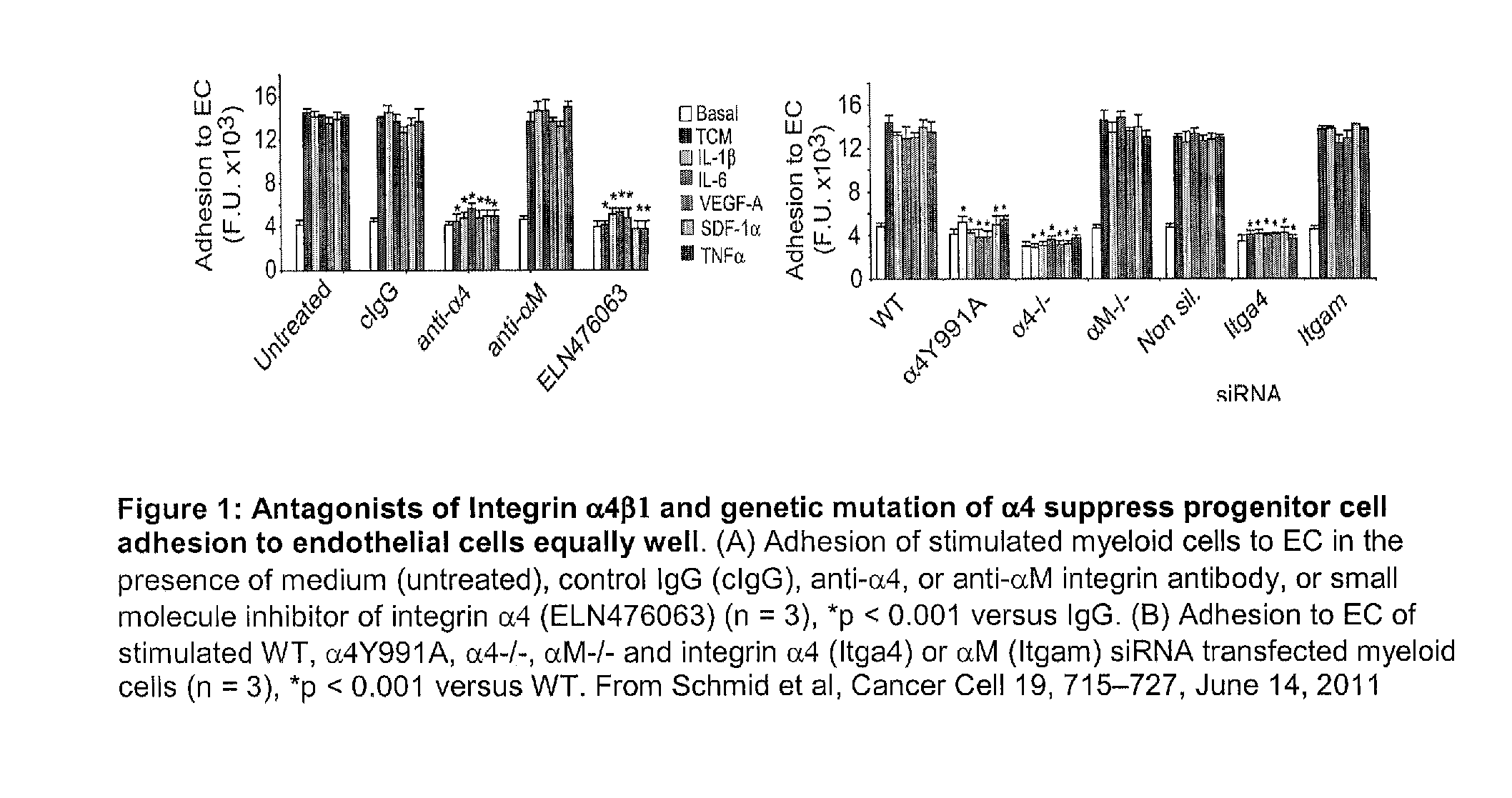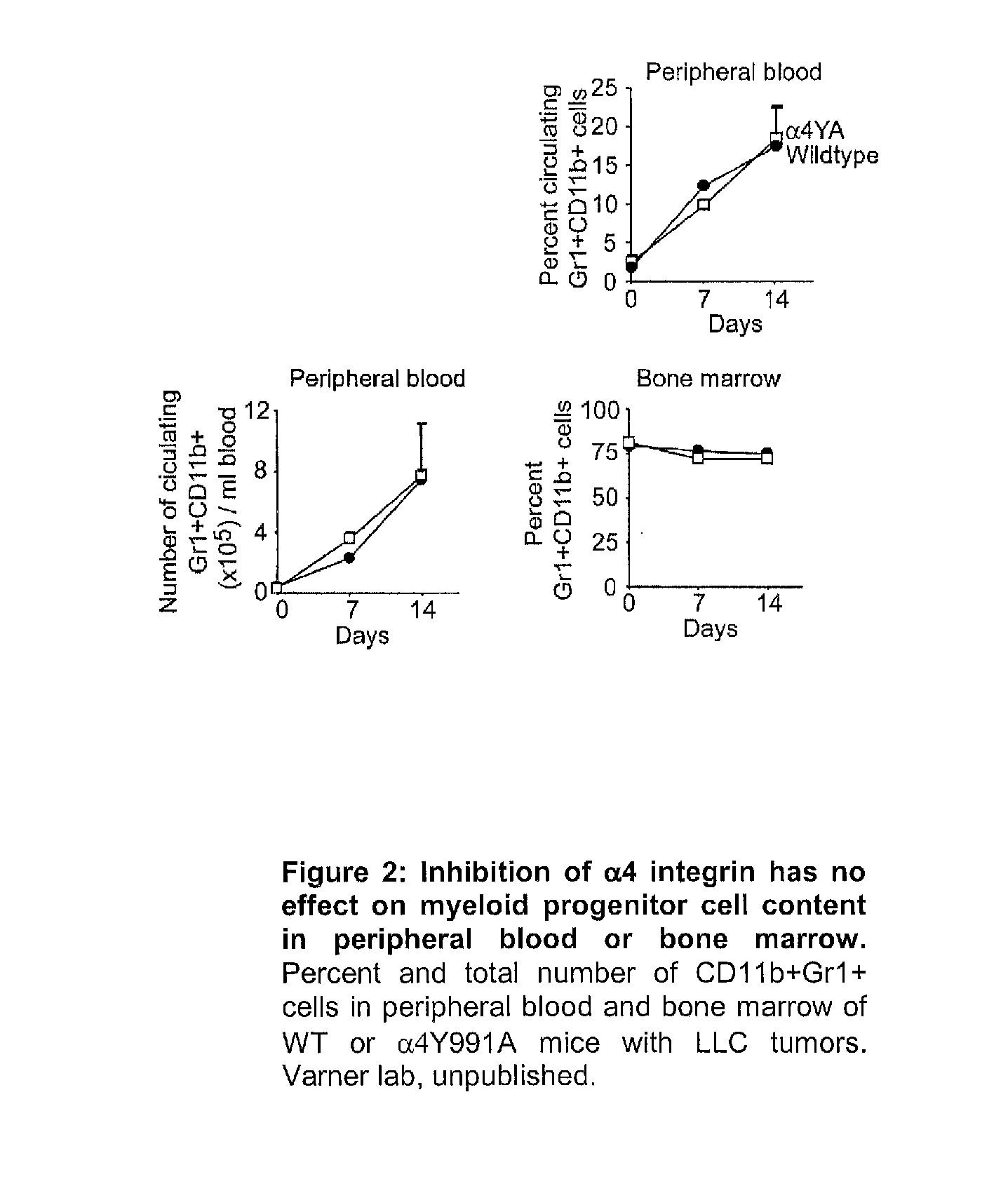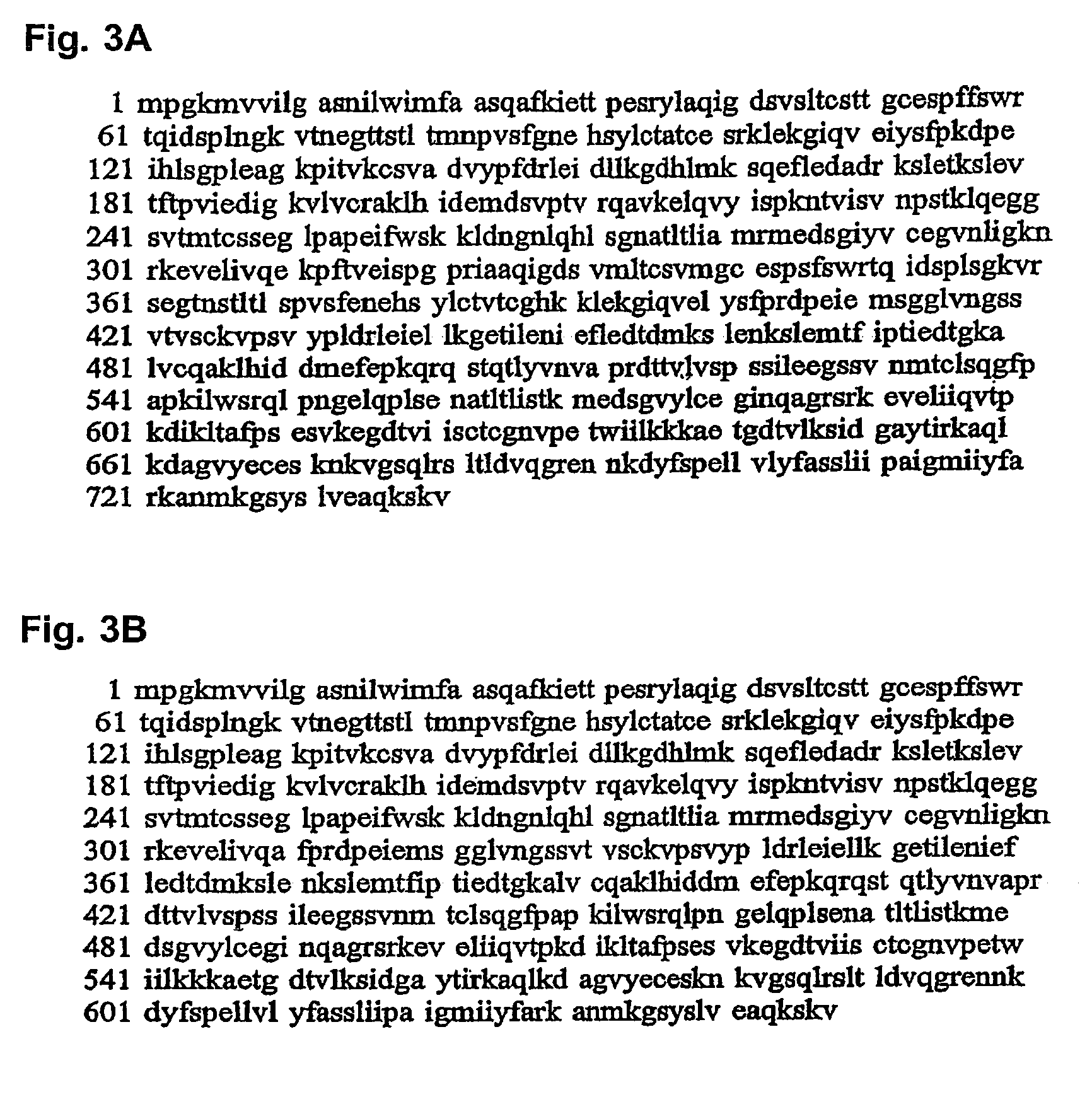Method for altering hematopoietic progenitor cell adhesion, differentiation, and migration
a technology of hematopoietic progenitor cells and hematopoietic progenitor cells, applied in the field of altering can solve the problems of unclear modulation of hematopoietic progenitor cell adhesion, differentiation, migration, etc., and achieve the effect of altering the level of hematopoietic progenitor
- Summary
- Abstract
- Description
- Claims
- Application Information
AI Technical Summary
Benefits of technology
Problems solved by technology
Method used
Image
Examples
example 1
Inhibition of Endothelial Progenitor Cell Migration In Vivo in Mouse and Rat Animal Models
[0232]Integrin α4β1 inhibitors can be used to prevent endothelial cell precursors from exiting the blood stream and entering sites of neovascularization. Angiogenesis assay are performed in mouse or nude rats transplanted with murine Tie2-LacZ bone marrow by injecting matrigel, a viscous extracellular matrix that solidifies at body temperature, containing angiogenic growth factors. Mice are treated by intravenous injection with anti-murine α4β1 and control antibodies or other inhibitors of α4β1. α4β1 inhibitors are anticipated to block LacZ staining cells from incorporating into blood vessels, indicating that α4β1 regulates endothelial precursor cell egress from the circulation. Frozen sections of the matrigel are stained with antibodies directed CD31 and Factor VIII related antigen to obtain an indication of angiogenic index.
example 2
Endothelial Progenitor Cells (EPC) Express Integrin α4β1
[0233]Purified human umbilical vein endothelial cells (“HUVECS”) (Clonetics, San Diego, Calif.) and endothelial progenitor cells (“EPCs”) cultured on fibronectin from circulating CD34+ stem cells (see Asahara et al., Science, 275:964-967, (1997)), were incubated with mouse anti-human integrin α4β1 antibodies for 60 minutes on ice, washed twice with PBS and then incubated for 30 minutes on ice in rhodamine-labeled goat anti-mouse IgG. Cells were washed twice with cold PBS then analyzed on a FACSCAN analyzer for expression of integrin α4β1. The percent cells expressing this integrin was determined and plotted according to cell type (FIG. 13).
[0234]Thirty-three percent of endothelial progenitor cells were positive for integrin α4β1 expression while only 12% of HUVECS were positive. These results showed that the inhibitory effect of α4β1 antagonists in angiogenesis result from an inhibition of the participation of endothelial proge...
example 3
α4β1 Antagonists Block Endothelial Stem Cell Contribution to Angiogenesis
[0235]Murine angiogenesis was induced by subcutaneous injection 400 μl of growth factor depleted matrigel containing 400 ng / ml bFGF or VEGF into the rear dorsal flanks of inbred mice of the strain FVB / N or into FVB / N mice that had been irradiated and transplanted with bone marrow from Tie2LacZ mice. Animals were treated by intravenous injection on day 0 and day 3 with 200 μg of endotoxin free rat anti-murine α4β1 antibody (PS-2) in 1001 or control isotype matched rat anti-murine integrin beta 2 antibody on days 1 and 4 (n=10). After 5 days, matrigel plugs were excised, embedded in OCT, frozen and sectioned. Thin sections (5 μm) were immunostained with rat anti-murine CD31 followed by Alexa 565-conjugated goat anti-rat immunoglobulin. CD31 positive vessel density per 200× microscopic field was determined in 5 fields per matrigel plug. Mean vessel density per field+ / − SEM was graphed versus treatment condition. P...
PUM
| Property | Measurement | Unit |
|---|---|---|
| pore size | aaaaa | aaaaa |
| adhesion | aaaaa | aaaaa |
| anti-vascular cell adhesion | aaaaa | aaaaa |
Abstract
Description
Claims
Application Information
 Login to View More
Login to View More - R&D
- Intellectual Property
- Life Sciences
- Materials
- Tech Scout
- Unparalleled Data Quality
- Higher Quality Content
- 60% Fewer Hallucinations
Browse by: Latest US Patents, China's latest patents, Technical Efficacy Thesaurus, Application Domain, Technology Topic, Popular Technical Reports.
© 2025 PatSnap. All rights reserved.Legal|Privacy policy|Modern Slavery Act Transparency Statement|Sitemap|About US| Contact US: help@patsnap.com



